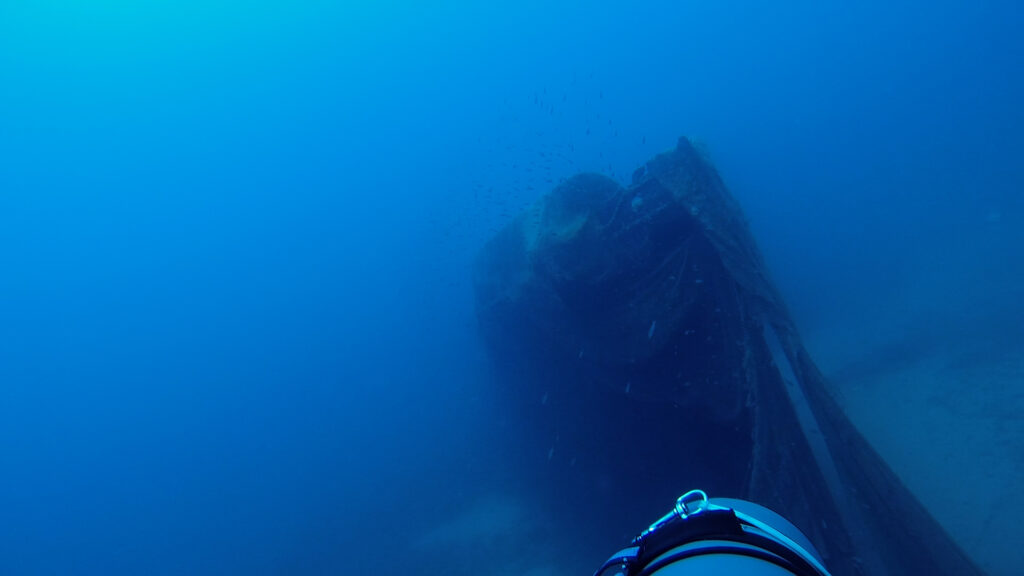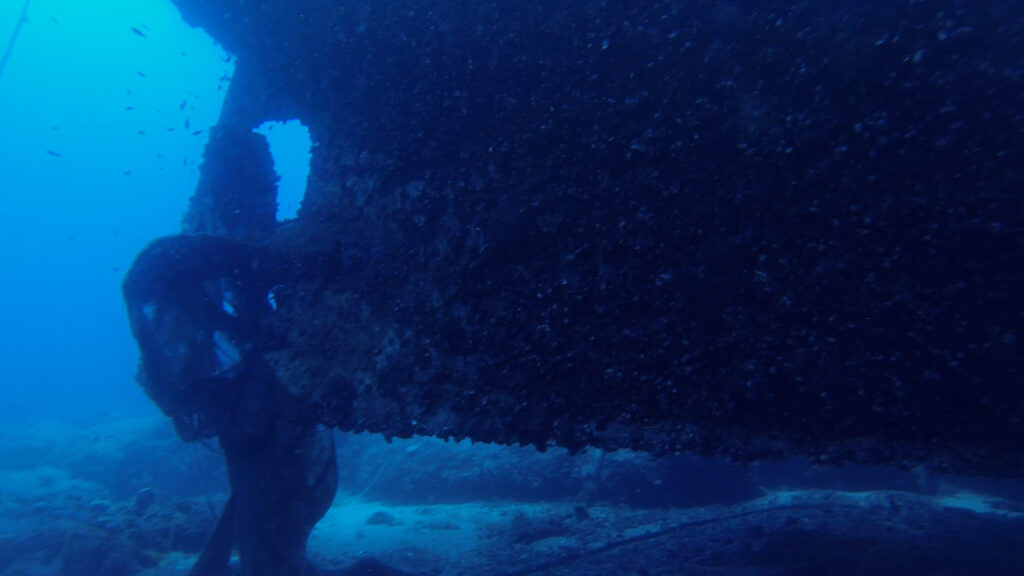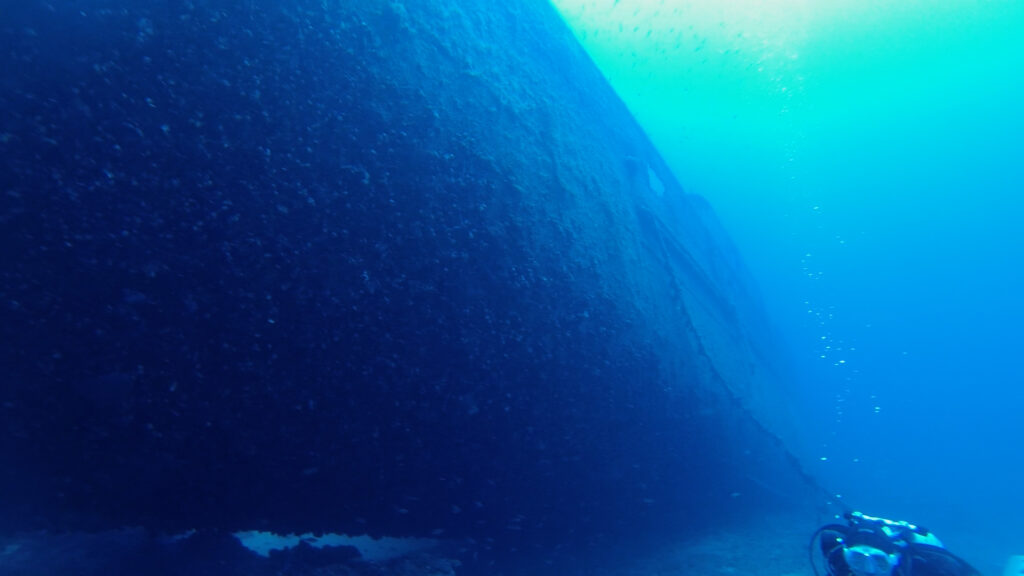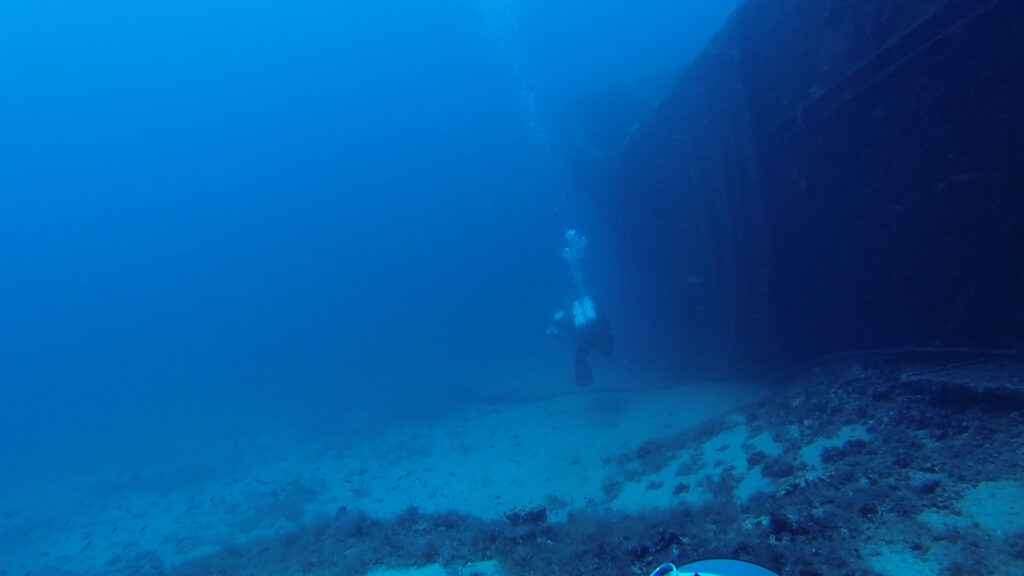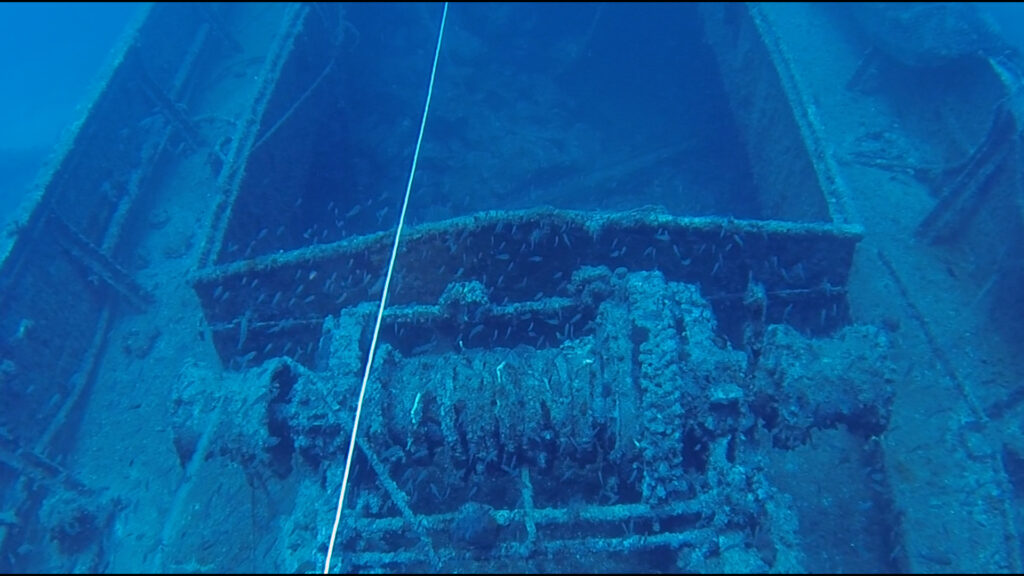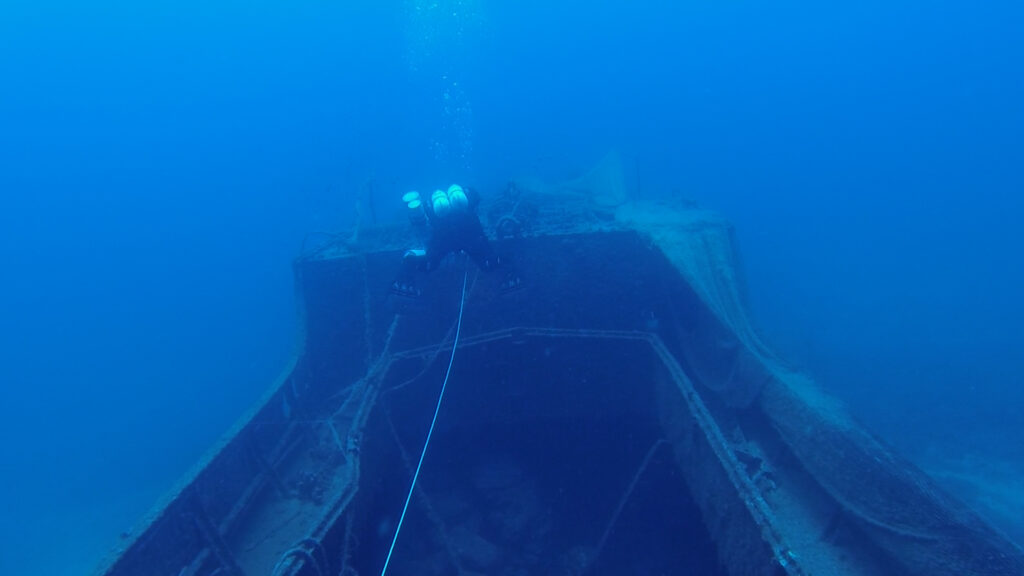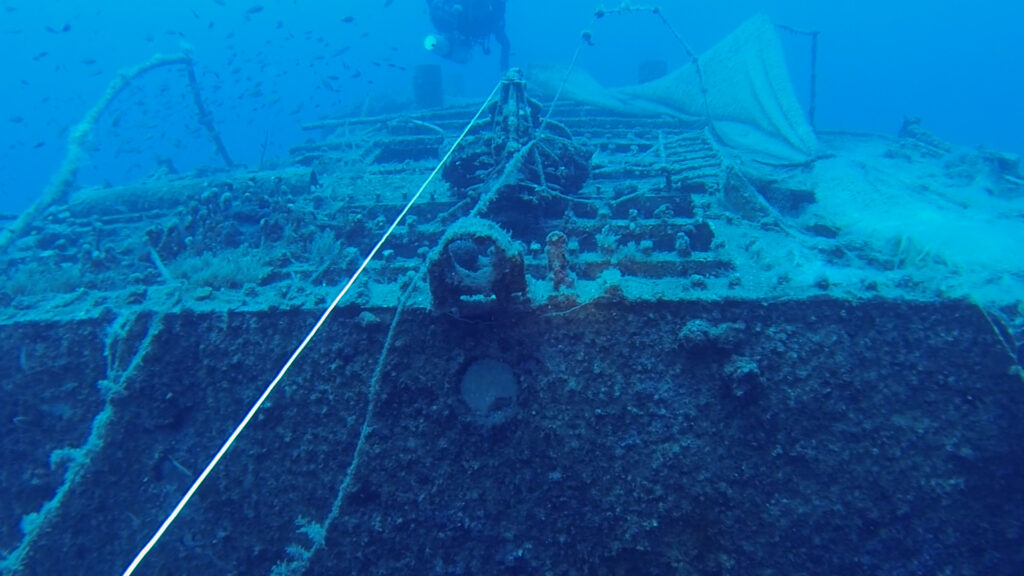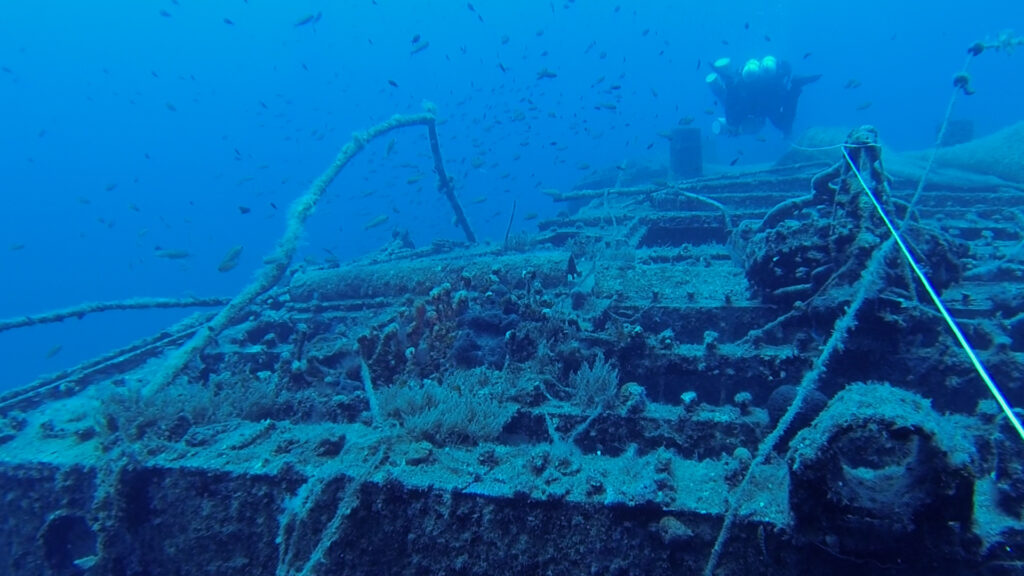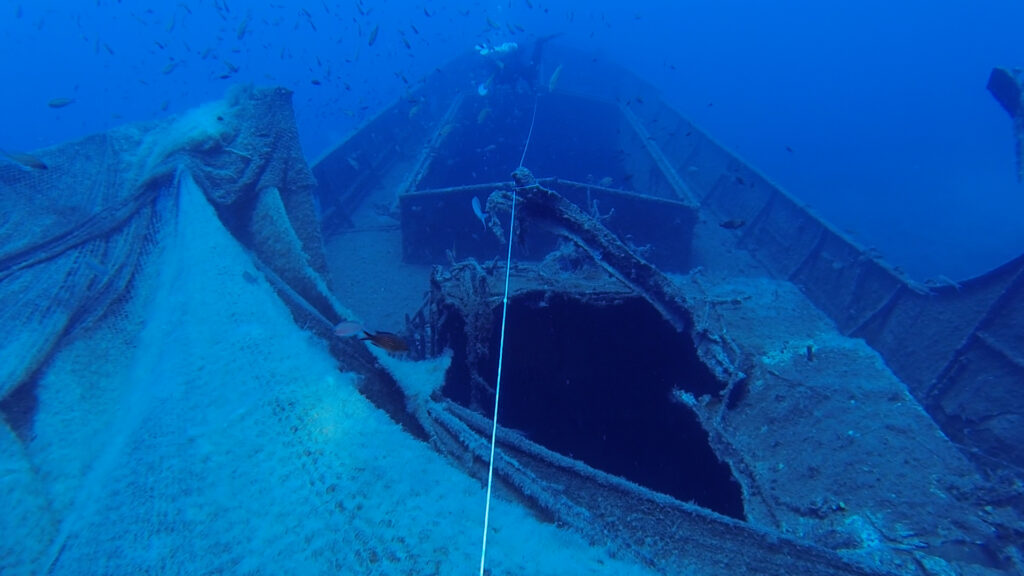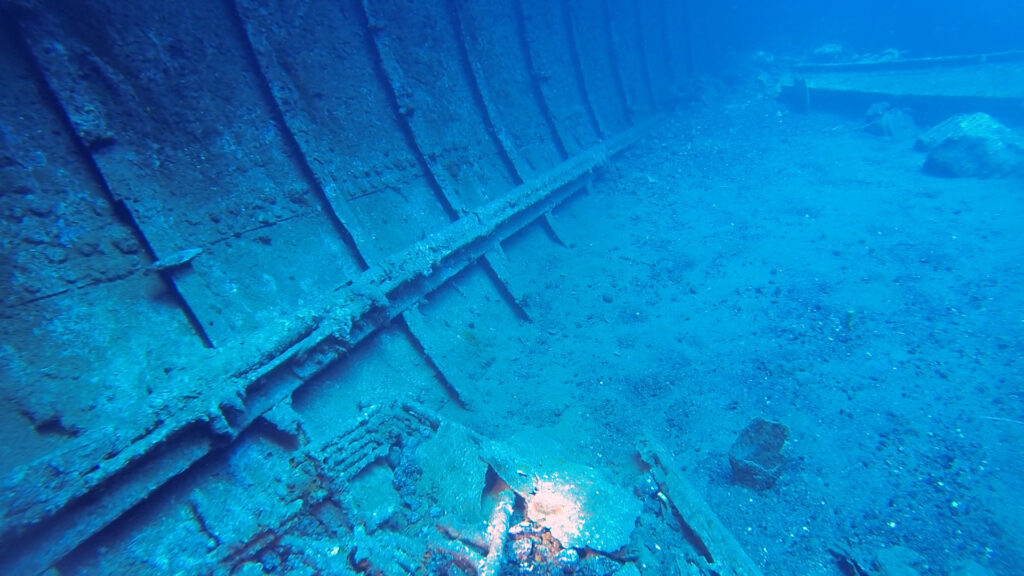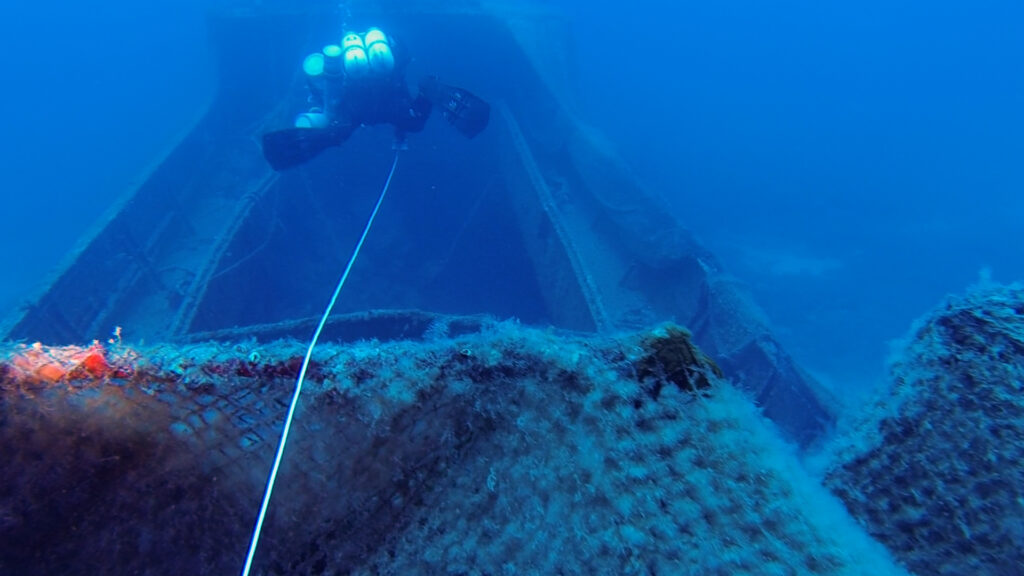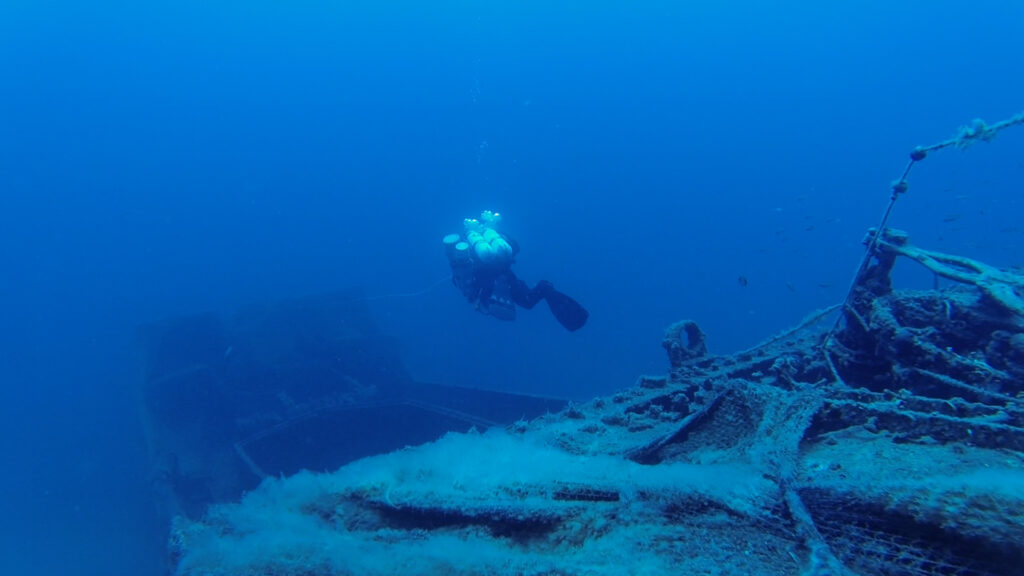S/S SAN EDUARDO
SERIFOS ISLAND
The ship was constructed in 1882 and its first name and constructor are still unknown. Its general characteristics and details are the below:
Name: SAN EDUARDO
Previous Names:
• 1882: unknown
• 1917: HERCULES
• 1931: SAN EDUARDO
International Indicative Sign: RGMB
Registration port: Gijon, Spain
Ship type: Cargo
Nationality: Spanish
Owned by:
• 1882: unknown
• 1917: Tejero, Perez y Gil, Bilbao, Spain
• 1920: Antonio Elola, Bilbao, Spain
• 1928: C. Zunzunegui, Bilbao, Spain
• 1931: Antonio T. Vega, Gijon, Spain
• 1942: Comercial Maritima de Transportes S.A. (TRANSCOMAR), Madrid, Spain
Construction: 1882 – not sure, 1917: general reconstruction at El Ferrol (La Coruna, Galicia), Spain
Year of construction: 1882
Total Gross Tonnage: 300
Total Net Tonnage: 124
Length (m): 46
Width (m): 5,8
Depth (m): 3,35
Propulsion: Three-cylinder retrogressive steam engine, A.G. Weser, Bremen, Germany
Power: 51 NHP
Propellers: 1
Crew: 15 members
Last Owner: Comercial Maritima de Transportes S.A., Madrid, Spain
Last Captain: Don Eduardo Butragueno Bueno, Toledo, Spain
Loss Date: 09.05.1943
Time of Loss: 18:00pm
Location of Loss: South-west side of Serifos (west Cyclades), Greece
Reason of Loss: Air attack
Aircraft Attacker: Beaufighter (Crew: F/Lt. J.M. Atkins (P) and F/O F.I. Wellington (O)) of 227 Long Range Fighter Squadron R.A.F.
Human Losses: Two Greeks and one Spanish: the stoker Panagiotis Chalpoutis, the boiler supervisor Jose Maria Martinez Castella (born on 03.07.1909 at Ares, La Coruna) and the sailor Michalis Georgidis.
During the 30s, the steam ship was owned by the marine company of Antonio T. Vega based at Gijon (Asturias) in Spain. In 1941, the Spanish marine company TRANSCOMAR (Comercial Maritima de Transportes S.A) bought S/S SAN EDUARDO with other ships owned by Spanish. The TRANSCOMAR, founded in July 1941, was actually the front for the Nazi Germany and it was directed by the parent Spanish-German company SOFINDUS (Sociedad Financiera Industrial, διευθυντής Johannes Bernhardt) in Madrid that was also part of the big and known German company ROWAK Handelsgesellschaft mbH based in Berlin.
In summer 1941, OKM (Oberkommando der Kriegsmarine, i.e the Supreme Administration of the War Navy) ordered the purchase of Spanish ships through the companies SOFINDUS and TRANSCOMAR in order to reinforce the military campaign of Erwin Rommel at North Africa. Due to the huge losses of the Italian troopships, that were caused by the intense activity of the British submarines at the Mediterranean, the German marine administration decided to use at the same time Spanish ships with Spanish crew under the impartial Spanish flag in order to mislead the British Royal Navy. The main mission of those ships was to transfer fuels, ammunition and supplies to Rommel’s army. This operation took the secret code name “Operation HETZE” (Operation Pursuit). Ten ships from the fleet of TRANSCOMAR (ADEJE, ISORA, MARIA AMALIA, NERE AMETZA, RIGEL, SAN EDUARDO, SAN ISIDRO LABRADOR, SAN JUAN II, JOSE TRUJILLO and VICENTE) started to be sent to Italy in summer of 1941 in order to execute the “HETZE“operation.
However, the internal conflicts, the competitive company procedures, the national legislations as well as the different international political approaches of the Axis Forces and the Spanish government led, during autumn 1941, to the differentiation of the initial plan regarding the “Operation HETZE” and the projected reinforcement of the Afrikakorps at North Africa. So, all the above mentioned Spanish ships, except for the NERE AMETZA, were sent to Greece where, having Spanish and Greek crew members without weapons, they operated exclusively within the Greek borders and especially to Crete until the sping of 1943 when they were commandeered and given to the German marine company MMR (Mittelmeerreederei). Then, after MMR taking all the German commercial fleet of the Mediterranean, the fleet was unofficially and without the authorization of the Spanish authorities under the responsibility of the German war navy, the Kriegsmarine.
The Spanish ships that operated at the Aegean Sea during the World War II are related to a complicated procedure of purchase, sale, requisition and staffing that had as a goal the reinforcement of the German sea transfers to the east Mediterranean as well as the “occasional erasure” of the tracks of these ships that, due to the frequent changes of names and flags, were characterized bootleg.
Everything was fine for the Germans until the spring of 1943 when the Allies started to attack to the Spanish ships at the Aegean Sea. The first operation against a Spanish ship was made on 05.04.1943 by B/Y KATSONIS (the captain was Vassilis Laskos) that attacked and sank the Spanish steam ship SAN ISIDRO LABRADOR outside of the bay of Mericha in Kithnos at the West Cyclades.
Almost a month later, on 09.05.1943 at 05:30am and under the navigation of the Spanish captain Don Eduardo Butragueno Bueno (Toledo, Spain) and the engineers Don Julian Diez Klejebarietta and Don Jose Balseiro Insua, SAN EDUARDO sailed from Piraeus to Milos (West Cyclades). The ship was loaded with food, concrete, construction materials, ammunition and it had a lorry at the bow (part of which was found during the field research exactly in front of the bow of the wreck) and small car at the stern (part of which was also found at the right side of the wreck). At 14.30pm and while the ship was near the cape of Cyclop (south-west Serifos), it was detected by a Beaufighter aircraft of the 227 Long Range Fighter Squadron R.A.F in which there were F/Lt. J.M. Atkins (P) and F/O F.I. Wellington (Ο).
After being detected, SAN EDUARDO was attacked many times with bombs and machine guns. During the first attack, the Greek stoker Panagiotis Chalpoutis and the Spanish boiler supervisor Jose Maria Martinez Castella were killed by 20mm projectiles. The captain ordered to turn off the engine, launch in the sea the lifeboat and abandon the ship. After turning off the engine, the crew started launching the lifeboat. During a new attack of the aircraft, the Greek sailor Michalis Georgidis was killed while at the same time the Greek greaser Christos Pagonis was injured at his leg. They also shoot the lifeboat that was in the sea and it started getting water in it. After this fact, two different liferafts were launched in the sea and the rest of the crew managed to leave. At 15.10pm, after the last inspection, the captain also abandoned the ship. At 17.30pm, the two liferafts arrived at a beach close to Mega Livadi from where the captain contacted the Italian authorities. At around 18.00pm, the adrift ship SAN EDUARDO sank at the sea area between Mega Livadi and Koutala (south-west Serifos).
The ORB of the 227 Long Range Fighter Squadron R.A.F. mentions the below regarding the sinking of the Spanish steam ship SAN EDUARDO: “37° 10/ N / 24° 20/ E sighted caique of 100 tons on course 300 at ? knots. On way to attack this caique aircraft sighted m/v of 700-800 tons with a motor lorry as deck cargo forward and a saloon car as deck cargo aft on course 090° at 10 knots. The name “Espana” was painted on the bows of the vessel. Two attacks with cannon and bombs were made. The bombs fall short by 50 yards. Cannon strikes were observed on the water line and superstructure. The motor lorry caught fire and burned out. The saloon car was struck by cannon. The crew abandoned ship.” S/S SAN EDUARDO was the second loss of a Spanish ship in the Aegean Sea during the World War II.
The Wreck
S/S SAN EDUARDO is located in an upright position on the keel at a maximum depth of 53m. The axis of bow-stern has a south-east direction. The total wreck’s length is 46m and the width is almost 6m. The absence of the engine and the boiler, the empty holds and the partial destruction of a part of the superstructure mean that the ship was plundered in the past, probably after the end of the World War II. However, the ship’s interior bottom, the holds, the rest parts as well as some particular characteristics of the wreck – such as the signs of the marine company of Antonio T. Vega – are sufficient to identify with certainty that this is the wreck of the Spanish steam ship SAN EDUARDO.
Historical Research: Dimitris Galon
Do what you can’t
